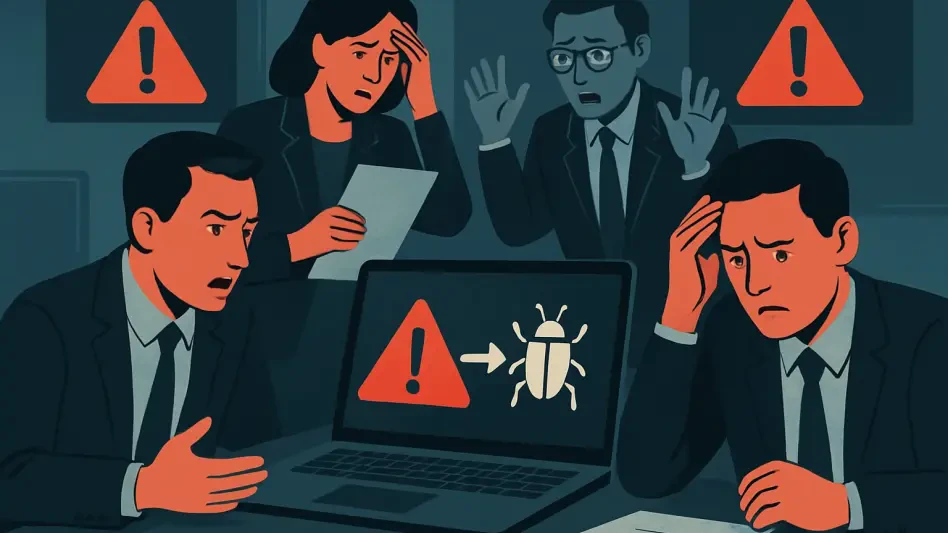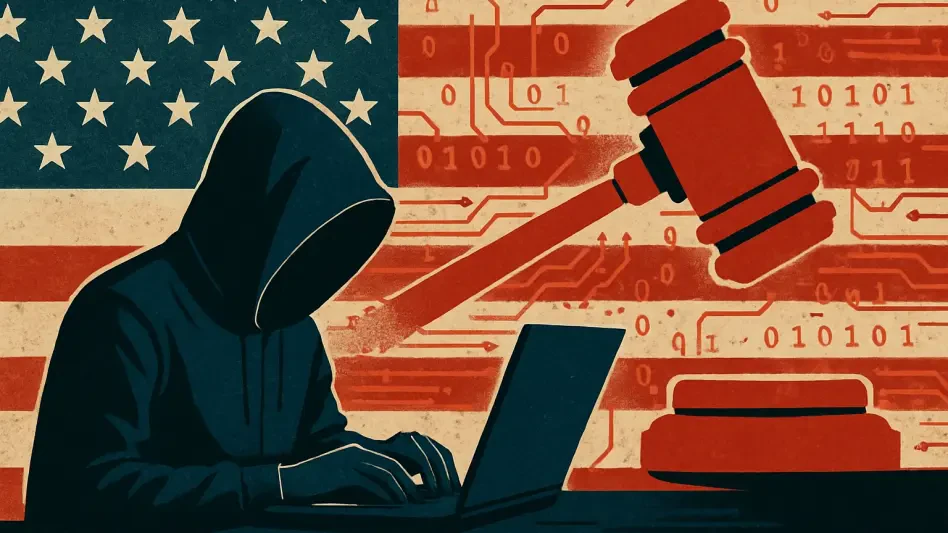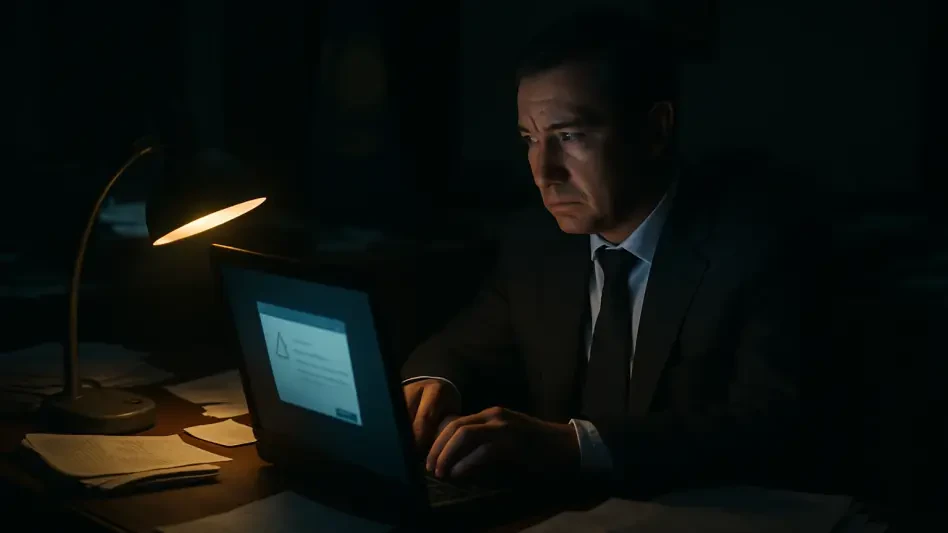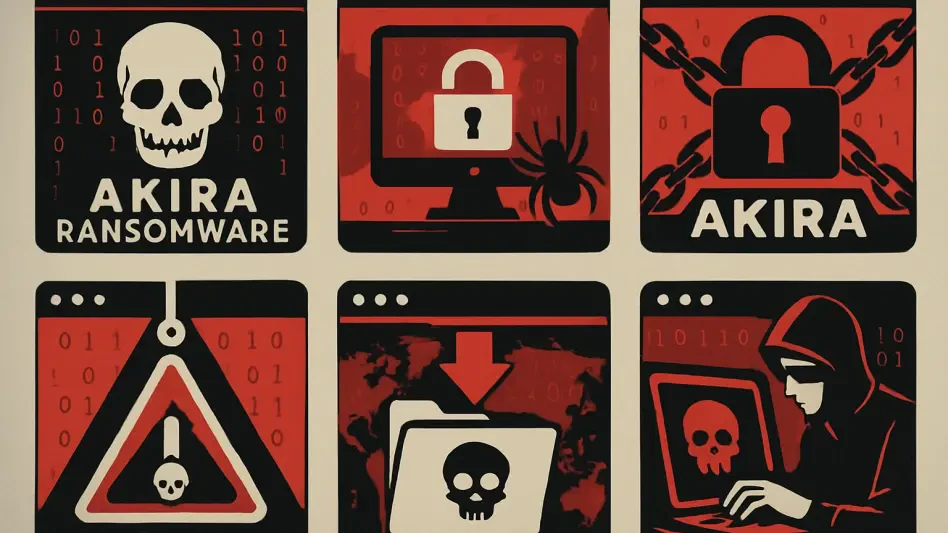In a digital landscape where cyber threats evolve at breakneck speed, a startling roadblock has emerged: the once-fluid exchange of critical threat intelligence between private companies and the federal government has ground to a near halt. Imagine a sophisticated cyberattack targeting the nation’s power grid—every second counts, yet companies hesitate, paralyzed by the fear of legal repercussions. This alarming standstill, triggered by the expiration of key liability protections, raises a chilling question: how vulnerable has the U.S. become in the face of unseen digital enemies? The stakes for national security and everyday safety have never been higher, demanding immediate attention to a crisis unfolding in real time.
The significance of this issue cannot be overstated. Cyber threat sharing serves as a linchpin for defending against attacks that could cripple critical infrastructure, from financial systems to healthcare networks. With most of these assets privately owned, collaboration between industry and government is essential to outpace hackers and nation-state actors. The lapse in legal safeguards has introduced hesitation and delay at a time when rapid response is non-negotiable, threatening not just corporate interests but the broader fabric of economic and societal stability. This story delves into the causes, consequences, and potential pathways forward in a fractured cybersecurity ecosystem.
Why Is Cyber Threat Sharing Grinding to a Halt?
The sudden slowdown in cyber threat information sharing marks a critical turning point for both private enterprises and federal agencies. Once, companies could swiftly pass along vital data about looming digital dangers, confident in the legal protections that shielded them from liability. Now, with those safeguards gone as of late last year, a palpable tension has settled over the industry, leaving many firms second-guessing every piece of intelligence they might disclose. The absence of a safety net has transformed what was a seamless process into a bureaucratic quagmire, with far-reaching implications.
This hesitation stems from a profound shift in risk perception. Corporate leaders, wary of lawsuits or regulatory backlash if shared data exposes vulnerabilities, have pulled back, opting for caution over collaboration. The result is a fragmented system where critical information—often the difference between thwarting an attack and succumbing to it—remains siloed. National security experts warn that this breakdown could embolden cybercriminals, who thrive on delayed responses and exploited gaps.
The Critical Role of Cybersecurity Partnerships
At the heart of national defense lies a lesser-known but vital alliance: the partnership between private companies and government bodies in safeguarding cyberspace. With approximately 85% of U.S. critical infrastructure—think energy grids, water systems, and transportation networks—in private hands, federal agencies rely heavily on corporate insights to detect and neutralize digital threats. This symbiotic relationship has long been a cornerstone of resilience against increasingly sophisticated cyberattacks.
The importance of this collaboration extends beyond boardrooms and government offices, touching everyday lives. A delay in sharing data about a ransomware campaign, for instance, could lead to hospitals losing access to patient records or power outages affecting millions. When threat intelligence stalls, the ripple effects endanger not just systems but the public’s trust in the security of essential services. The current lapse in protections jeopardizes this delicate balance, amplifying vulnerabilities at every level.
Consequences of Vanished Legal Shields
The expiration of liability protections under a key cybersecurity law on September 30 has unleashed a cascade of challenges. Companies now face a chilling effect, with legal teams meticulously reviewing every byte of data before it’s shared, often delaying critical information by days or even weeks. This newfound caution, while understandable, has created bottlenecks that hinder the government’s ability to respond to threats in real time, leaving systems exposed.
Industry responses to this crisis vary widely, reflecting a stark divide. Major players like CrowdStrike have publicly committed to maintaining robust sharing practices despite the risks, viewing it as a duty to national security. Smaller firms, however, often lack the resources to navigate potential legal minefields and are more likely to hold back, as noted by anonymous industry insiders. This inconsistency fragments the cybersecurity front, weakening collective defenses.
The real-world impact of these delays is starkly illustrated by hypothetical yet plausible scenarios. Consider a phishing campaign targeting financial institutions—if threat data isn’t shared promptly, attackers could siphon millions before countermeasures are deployed. Such examples underscore how the absence of protections doesn’t just slow collaboration; it directly exacerbates the damage of cyberattacks on critical infrastructure, heightening the urgency for resolution.
Insights from Cybersecurity Frontlines
Voices from across the cybersecurity spectrum paint a vivid picture of the current turmoil. Henry Young of the Business Software Alliance has pointed out that the reintroduction of legal scrutiny into threat-sharing discussions acts as a significant barrier, stalling processes that once moved at lightning speed. His perspective highlights a frustrating reality: risk aversion is now trumping the urgent need for action in many corporate decision-making circles.
Legislative leaders echo these concerns with a broader lens on national implications. Senator Gary Peters (D-Mich.) has sounded the alarm on the heightened vulnerability to economic and security threats during this lapse, emphasizing that the U.S. cannot afford to remain in this state of limbo. Anecdotal accounts from industry insiders further reveal the day-to-day struggles, with one cybersecurity officer anonymously describing the painstaking effort to balance legal compliance with the ethical imperative to share life-saving data. These combined viewpoints ground the issue in both policy and human terms.
Charting a Course Through the Crisis
Navigating this unprecedented challenge requires immediate and innovative strategies from all stakeholders. One practical step for companies involves adopting interim risk assessment frameworks that prioritize essential data sharing while minimizing exposure to legal pitfalls. Such measures, though imperfect, could serve as a stopgap to maintain some level of collaboration until permanent solutions are in place, ensuring that critical threats don’t go unaddressed.
On the legislative front, hope emerges through efforts like Senator Peters’ bill, which seeks to reauthorize liability protections for a decade starting from 2025 and includes retroactive safeguards for firms that shared data during the lapse. This proposal, if enacted, could restore confidence and streamline cooperation. Yet, political hurdles persist, with differing views between the House and Senate on extension timelines complicating swift passage. Advocacy for bipartisan support remains crucial to bridge these divides and secure a long-term fix.
Beyond immediate fixes, a broader cultural shift toward prioritizing cybersecurity collaboration over legal caution is essential. Industry and government must work hand in hand to rebuild trust, perhaps through public-private task forces dedicated to refining data-sharing protocols. These efforts, combined with sustained pressure on lawmakers to act decisively, offer a pathway to not only resolve the current crisis but also strengthen defenses against future disruptions in an ever-evolving threat landscape.
Reflecting on this pivotal moment, it is clear that the lapse in legal protections has exposed a fragile underbelly of national cybersecurity. The hesitancy it bred among companies, coupled with the stark warnings from industry and legislative leaders, paints a sobering picture of risk. Yet, amidst the challenges, actionable steps have emerged—interim frameworks, legislative proposals, and calls for bipartisan unity have laid the groundwork for recovery. Looking ahead, sustained collaboration between sectors promises to rebuild a robust sharing ecosystem, while ongoing advocacy aims to ensure that such a vulnerability does not resurface. The path forward demands vigilance and commitment, a reminder that in the digital age, security is a shared responsibility.








